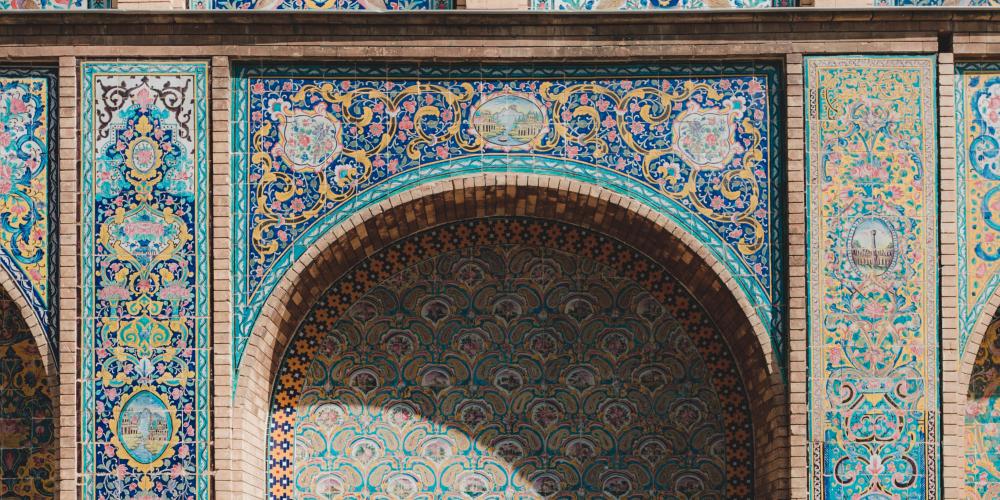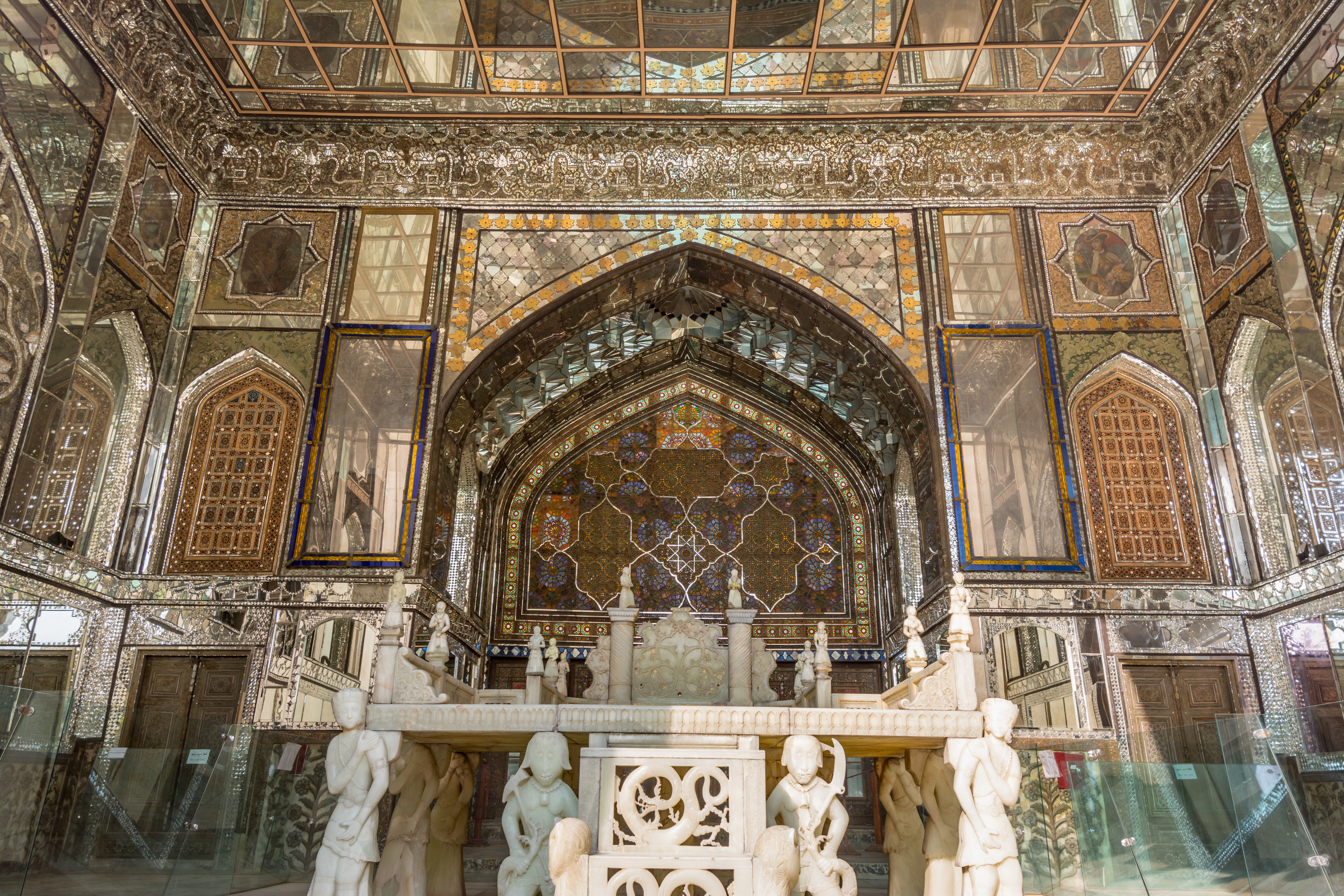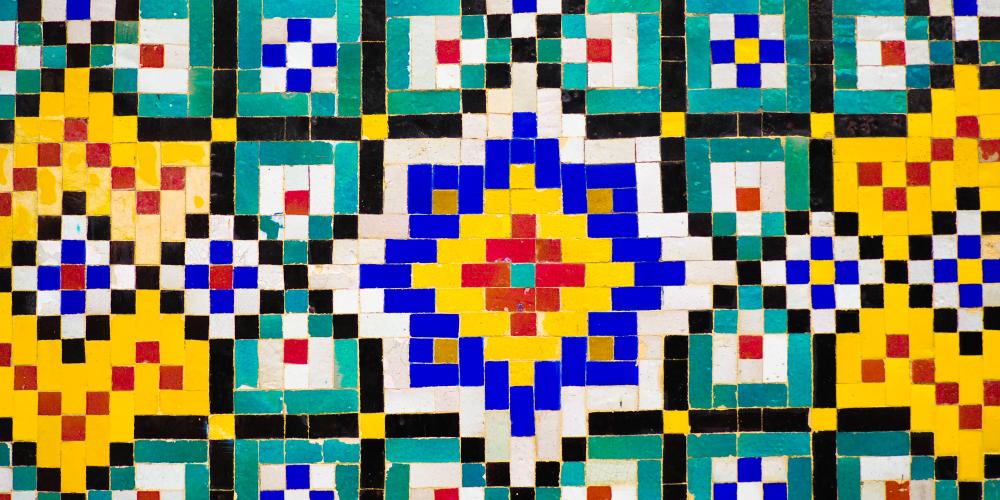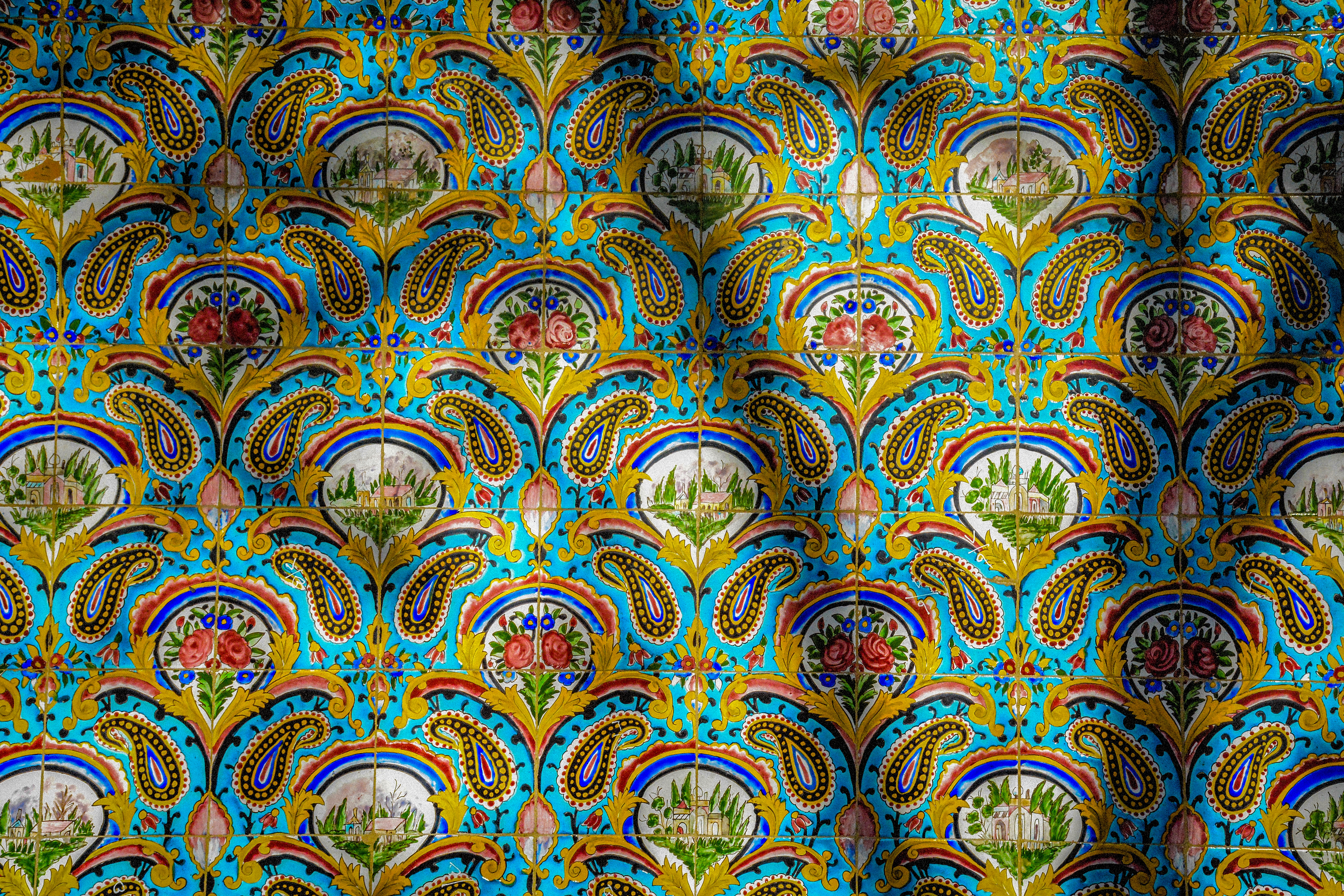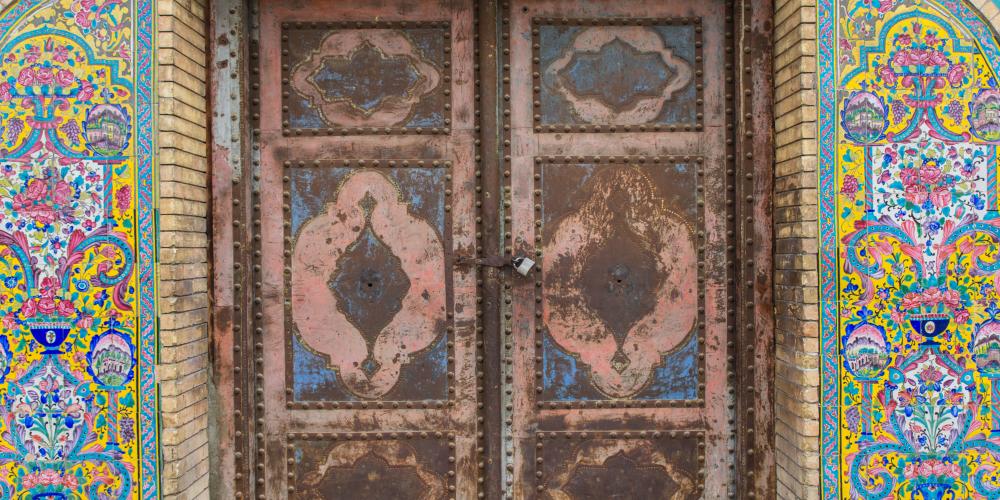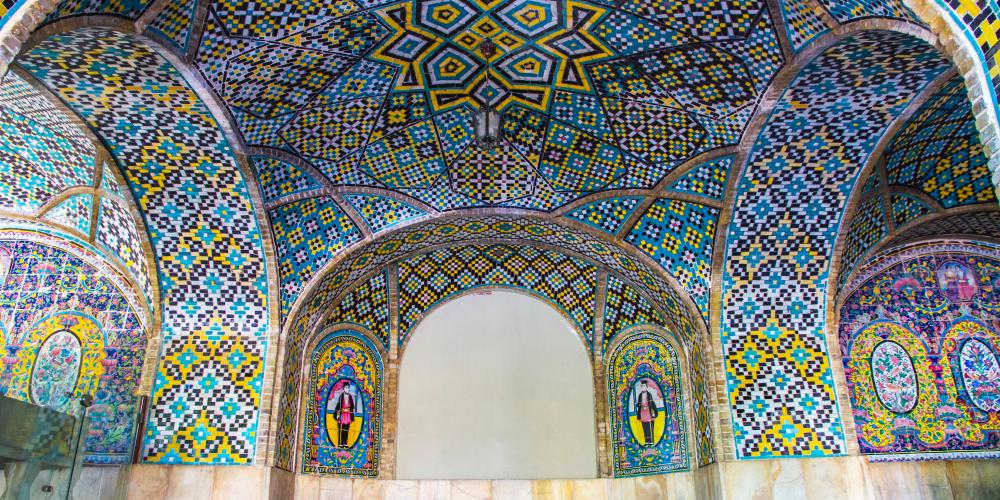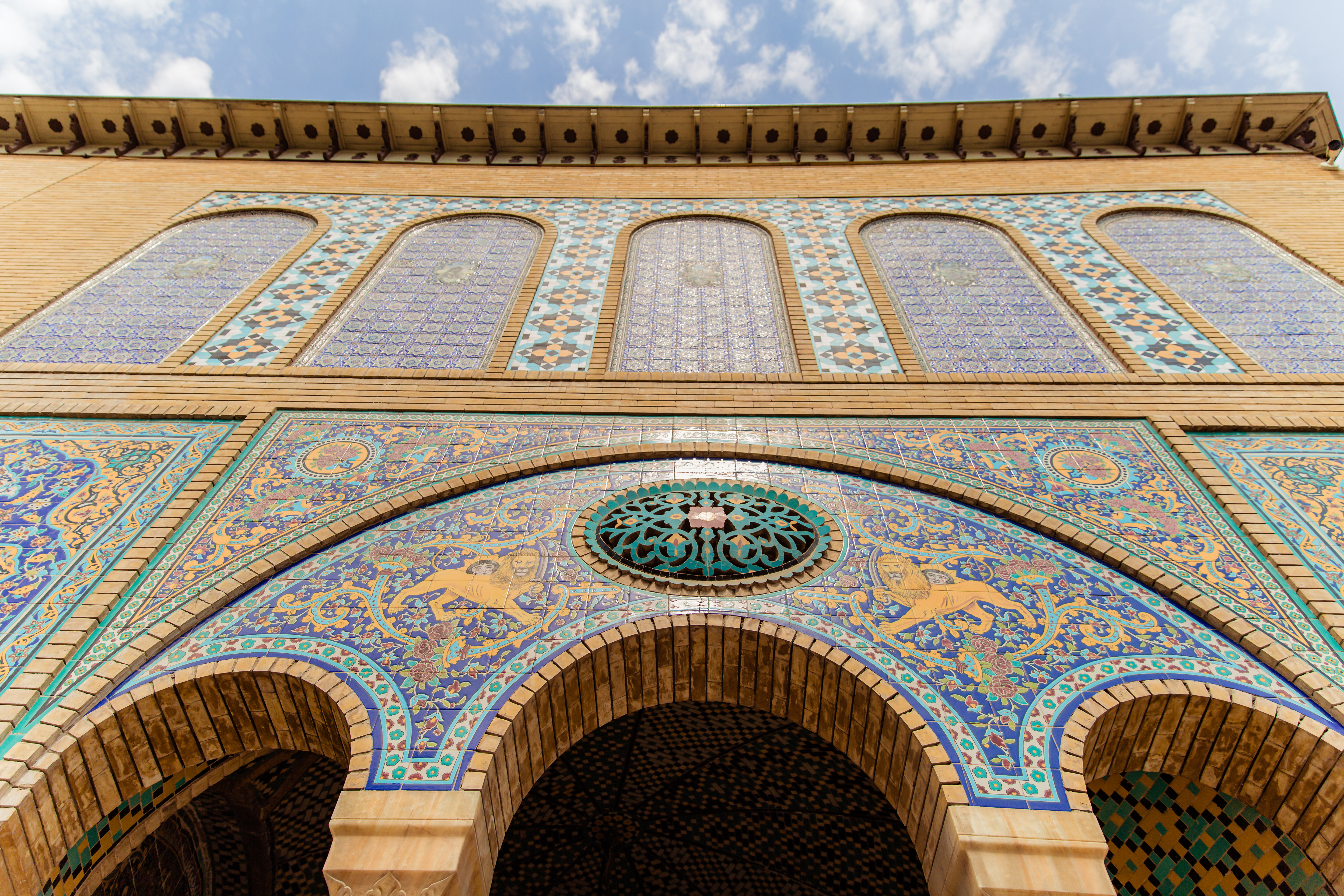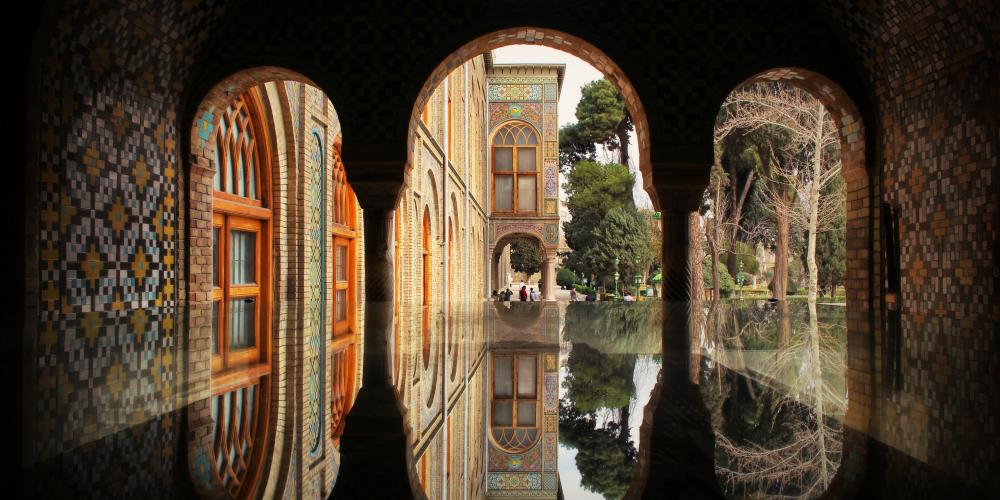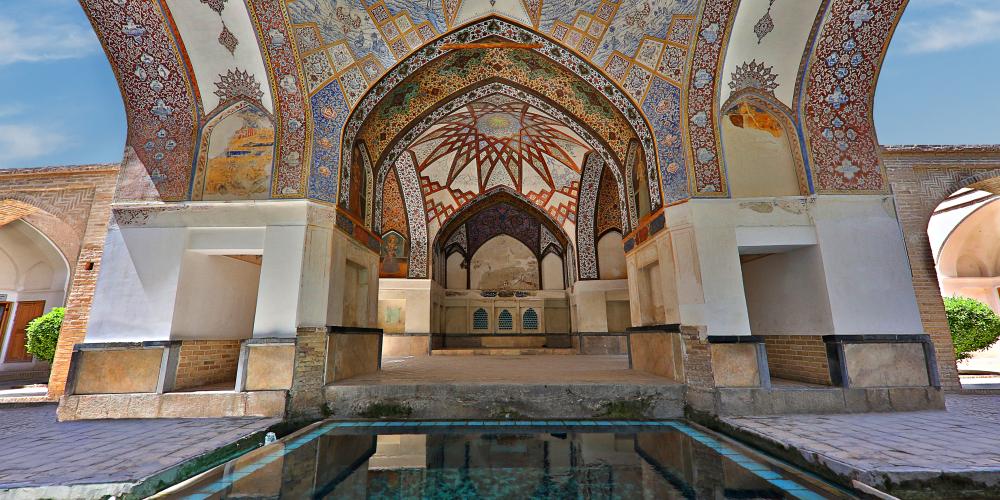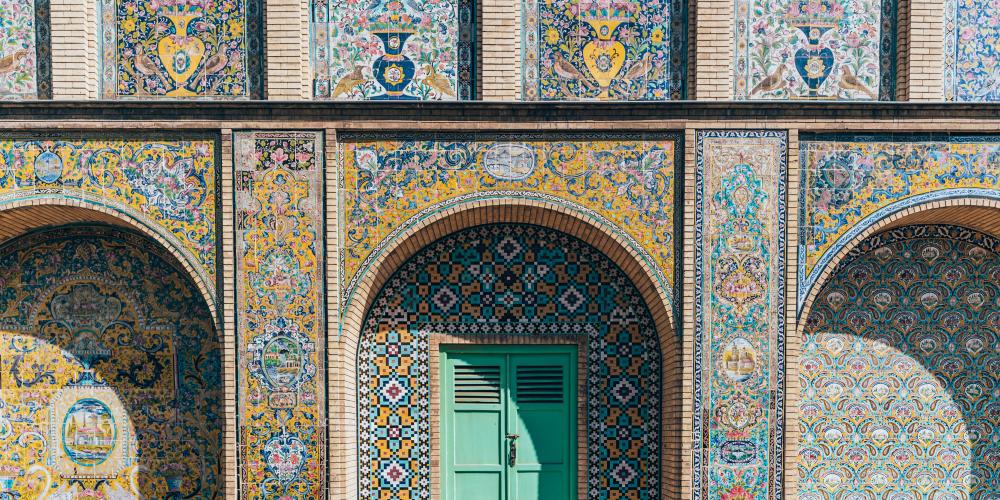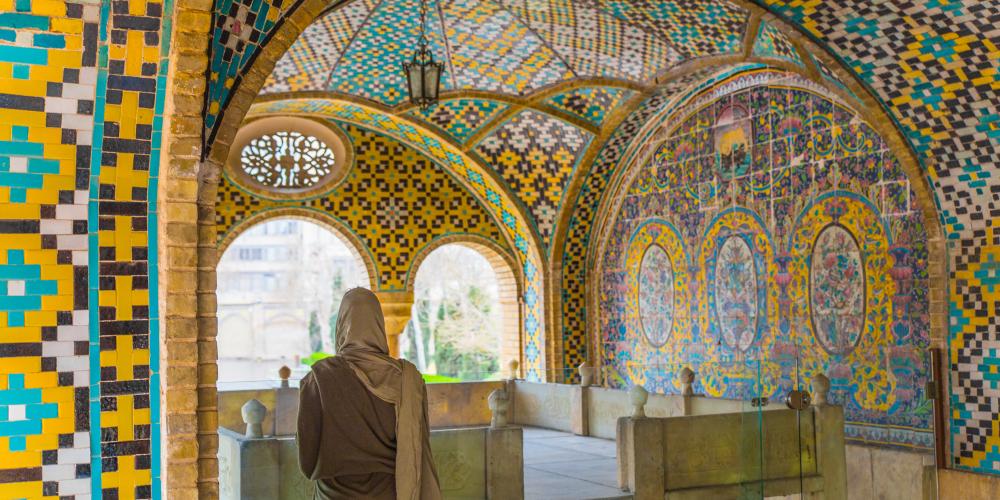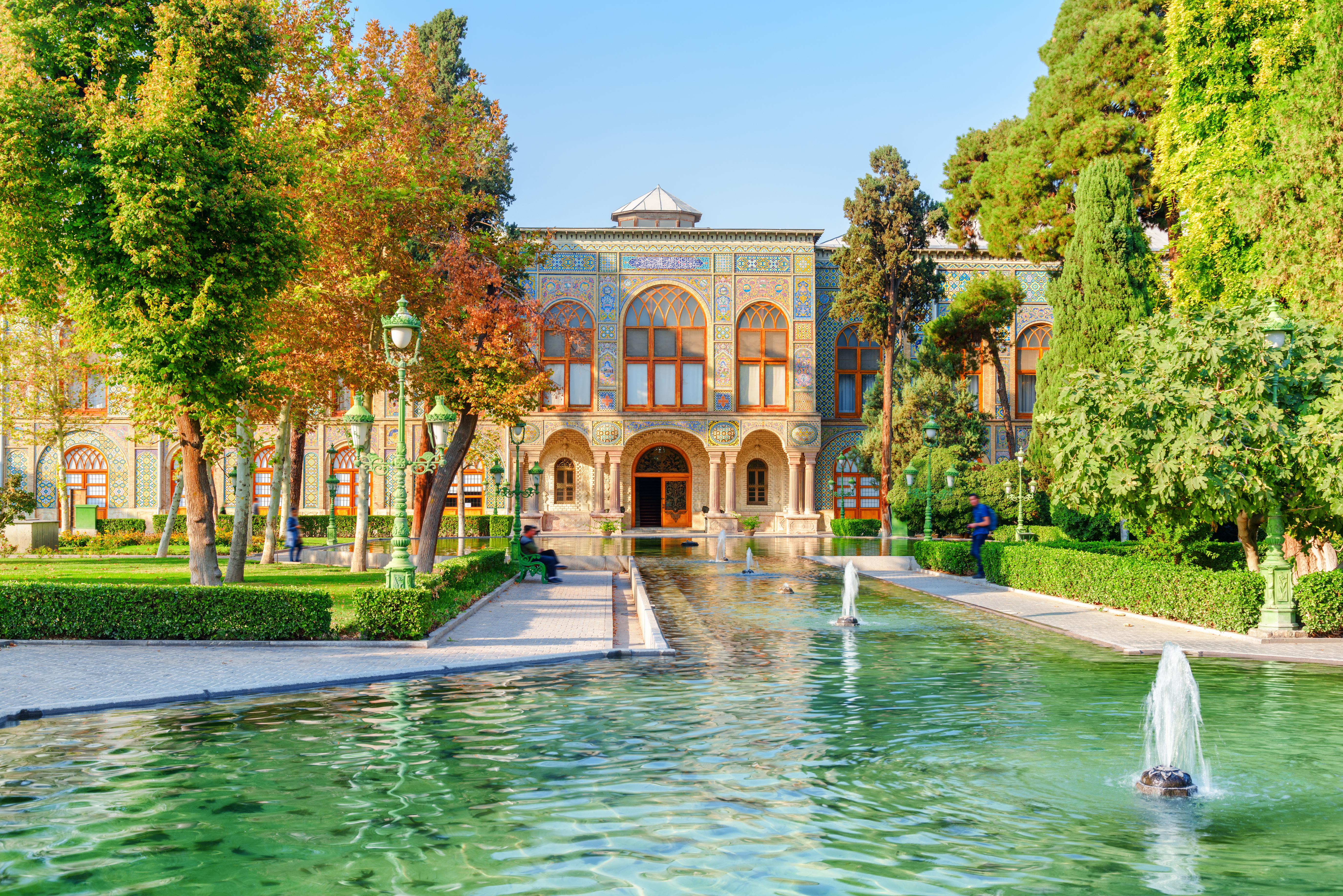Golestan Palace

While the Golestan Palace saw a rise in importance in 1794 under the Qajar dynasty’s naming of Tehran as the capital, it was actually constructed much earlier under the Safavid dynasty in 1524. It was the Shah, Tahmasp I, who saw to the building of the palace, along with a defensive wall to protect the residing dynasty. It remained in this state until the beginning of the Zand dynasty in 1750, when Shah Karim Khan Zand oversaw a renovation of the palace. Following his assassination in 1797, the palace would see its use changed to be a formal area for royal receptions. The new Pahlavi Empire did not use the Golestan Palace as a residence and instead constructed their own palace in Niavaran.
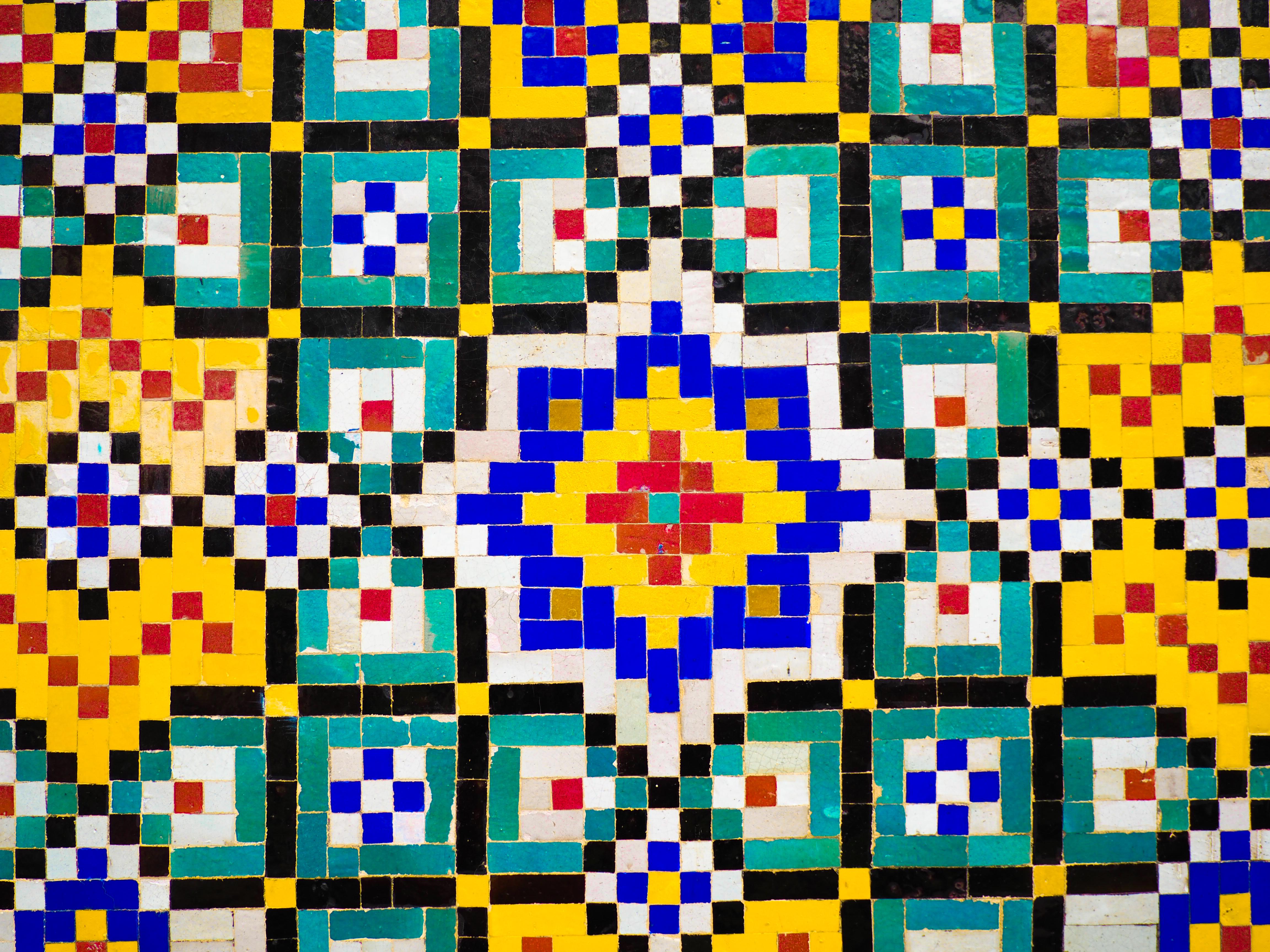
Of the 17 total sites constructed during the Qajar dynasty, there are eight main structures with their own respective museums located in the Golestan Palace. These are the Marble Bed Mansion, Pool Museum, Mansion Shams al-Amara, Windbreak Mansion, House Photo Museum, Diamond Mansion, Museum of Anthropology, and Main Museum (which includes the Gallery and Special Museums, and the Dedicated Palace).
As well as traditional Persian architecture, Golestan Palace also has examples of 18th century European Neo-classical architecture. Within the halls, there are also many European paintings on the walls - a style brought primarily by Naser al-Din Shah. This synthesis of art and architecture, of East and West, is not limited to the palace itself, as even the white marble fountain at the entrance draws inspiration from architecture during the European Renaissance.
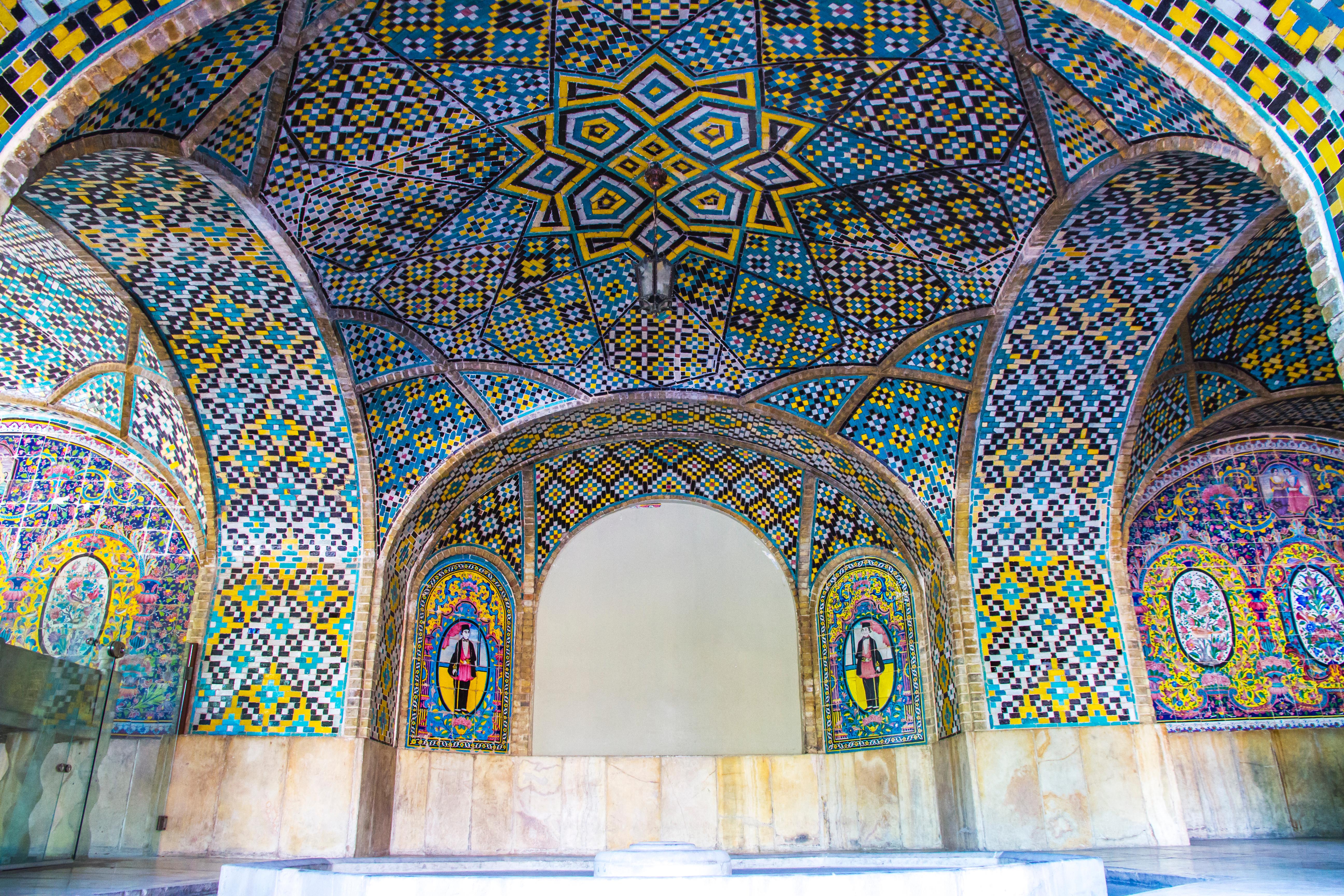
The Palace Highlights
The Golestan palace consists of eight museums that the visitor can access by foot. They represent different parts of the palace and of Iranian culture and each has unique features that can only be spotted there. The eight museums are highlighted here, however, the order does not mean a suggested itinerary as you can choose to visit it how you please.
The Marble Bed Mansion
One of the highlights of the Marble Bed Mansion is the delicate artwork that adorns the walls, bedding, and architecture of the mansion. This is the place where the Qajar kings used to sit and listen to the requests and complaints of their subjects. The mansion underwent renovations and modifications throughout the years to finally become what can be seen today. The marble bed that gives its name to the museum was added by an order of Fath Ali Shah Qajar and was placed in the middle of the Royal porch. Visitors are able to see the bed from the courtyard.
Pool Museum
The pool museum shows the relationship of the Qajar dynasty with Europe and the Qajar kings’ trips to the old continent. The art in the Golestan Palace is highly influenced by European artists. The place was redesigned and repainted after Nasser al-Din Shah Qajar came back from his trip to Europe. Even though it is called Pool Museum, the site does not have a pool, but it is defined as a place with cool air that was used to rest.
Mansion Shams al-Amara
One of the gems of the Golestan Palace and a must-visit museum, the Mansion Shams al-Amara, is a five-story building that was ordered by Nasser al-Din Shah. It is said to be one of the tallest buildings in Iran at the time of its construction. The inspiration to build such a tall construction came from al-Din’s trip to Europe where he was impressed with the skyscrapers. The building testifies to the rise of Iran’s urban development and was built at the same time as Nasiriyah Street.
Windbreak Mansion
The Windbreak Museum (or Windbreak Mansion) is a beautiful construction built during the reign of Fath Ali Shah. Its main room is adorned with breathtaking mosaics. The name of the museum comes from the windbreakers located in the pool house adjacent to the mansion. There are four tall windbreakers made out of mosaic tiles. The pool house was mostly used by the kings during the summer as the windbreakers cooled the air of the halls and rooms in the house.
House Photo Museum
The House Photo Museum is the part of the palace dedicated to the display and storage of different photos of the Qajar dynasty, as well as photo equipment from their time. This museum shows the love and interest that Nasser al-Din Shah had for photography and some of his own photos and manuscripts are kept in the museum.
Diamond Mansion
One of the oldest constructions in the Golestan palace, this museum is outstanding for the architecture style. With countless amenities, including halls, rooms, and attics, the Diamond Museum gains its name for the interior mirror in the mansion. The decoration of the property changed with time and its walls were covered with wallpapers of styles from around the world. During Nasser al-Din Shah’s reign, the architecture style was changed to match Roman-like architecture, resembling more of a European style of construction.
Museum of Anthropology
The Anthropology Museum, also known as the White Palace, stores magnificent pieces of art and precious treasures. Gifted to the Qajar family by the Ottoman king Sultan Abdul Hamid, some of the attractions in the museum include Louis XVI’s steel sofas, velvet curtains, bronze and gold statues, and a few Turkish carpets. It is interesting to note that the White Palace was built specially to keep and store these gifts. Later, the Anthropology Museum was established in the palace during Reza Shah Pahlavi’s rule. He was responsible for promoting the creation of the museum and ordered experts to search the country for artefacts that would represent life in different regions or Iran to be displayed in the museum. It is an outstanding museum and a must-see of the complex.
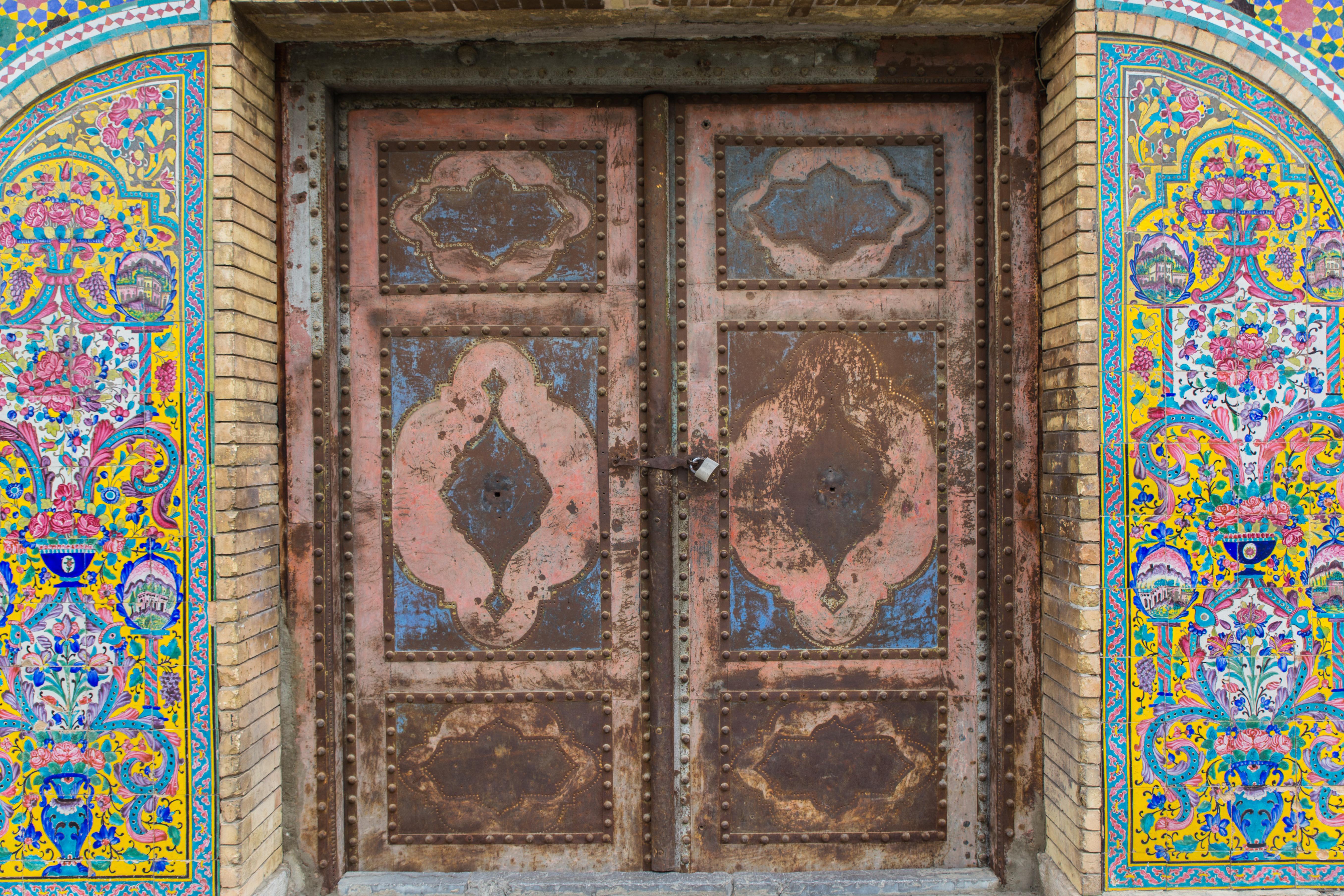
How to get there
The Golestan Palace is accessible by car and on foot. Since Tehran was chosen as the capital by the Qajar dynasty, the city wound up developing around the palace leaving it squarely in the centre. This, combined with the robust public transportation system in Tehran makes it easy to access the palace from many areas of the city.
To get there, simply hop on the Metro Line-1 until Panzdah-e Khordad Metro Station (15th Khordad metro station). Outside the metro there is a cobblestone street. Following this cobblestone street leads directly to the front of the palace. Metro tickets in Tehran are sold as single, two journey, day ticket and multi day ticket. You can download the Tehran Metro app to help you plan your journey.
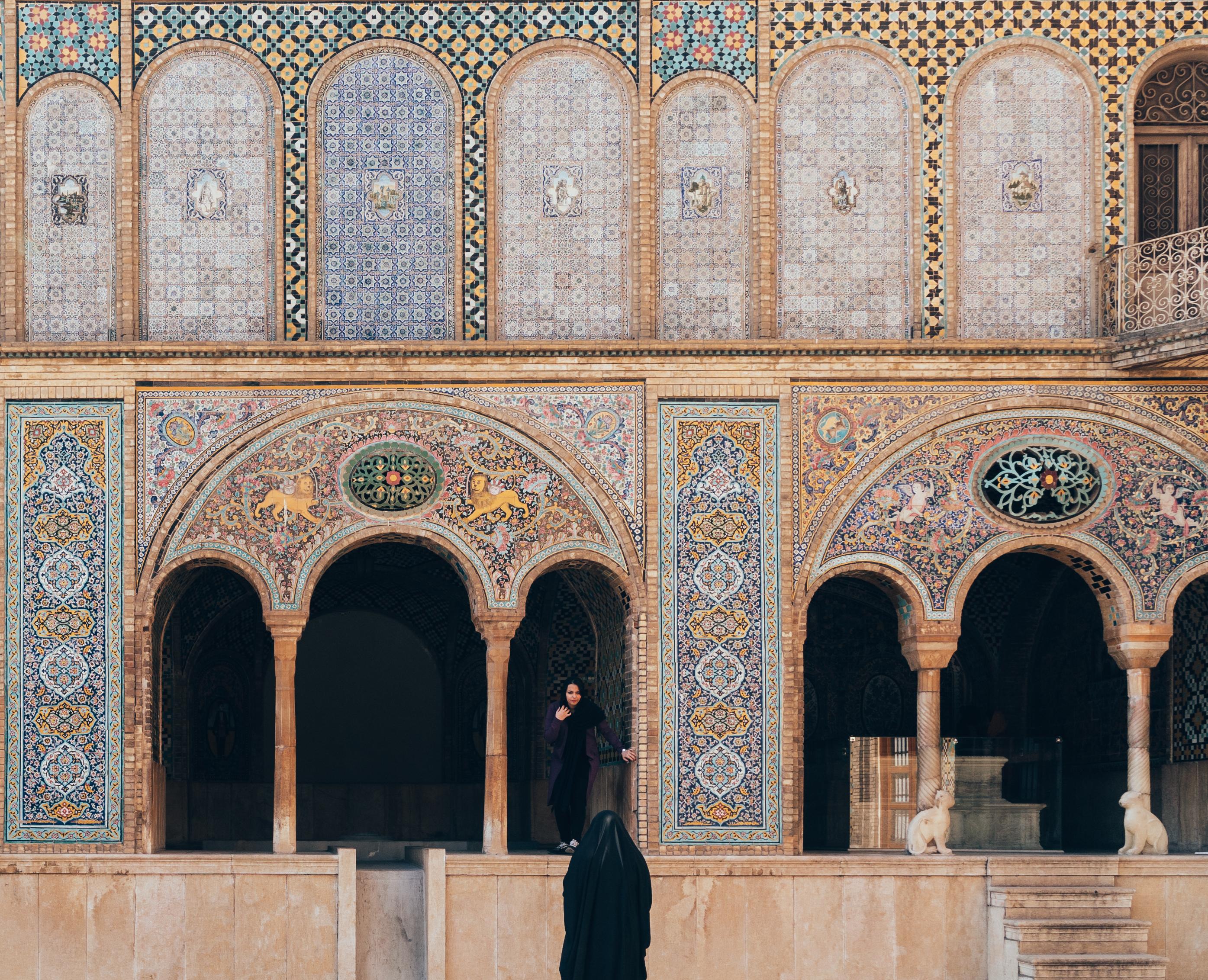
How to Visit
Visitors are recommended to allocate at least two hours to tour the Golestan Palace. This may vary as each of the eight museums has separately sold tickets, but all are located in close proximity to each other. There are also many guided tours available in the area, some of which include separate amenities in their guide packages. Each one of the stunning structures is within walkable distance and gives freedom to the visitor to decide what to visit first.
The lush vegetation of the garden is the introduction for a visit to Golestan Palace, with the main structures around the edge of the landscaped sanctuary. Entering any of the halls, you'll find the lavish decorations of traditional Persian architecture, with features like marble carvings, tilework, stucco, mirror, and lattice windows. There are eight museums within the palace, displaying collections that include jewels, military equipment, traditional costumes, and Iranian and Western art. Not just marvels to the eye, a deep history can be found within the walls of the site.
Sights and Attractions recommended by the locals
Golestan Palace
The Golestan Palace is open for most of the year, with closures only on Islamic holidays. Since the beauty of the location includes the outdoor garden and fountain, visitors may want to visit in the warmer months to appreciate all the location has to offer.
